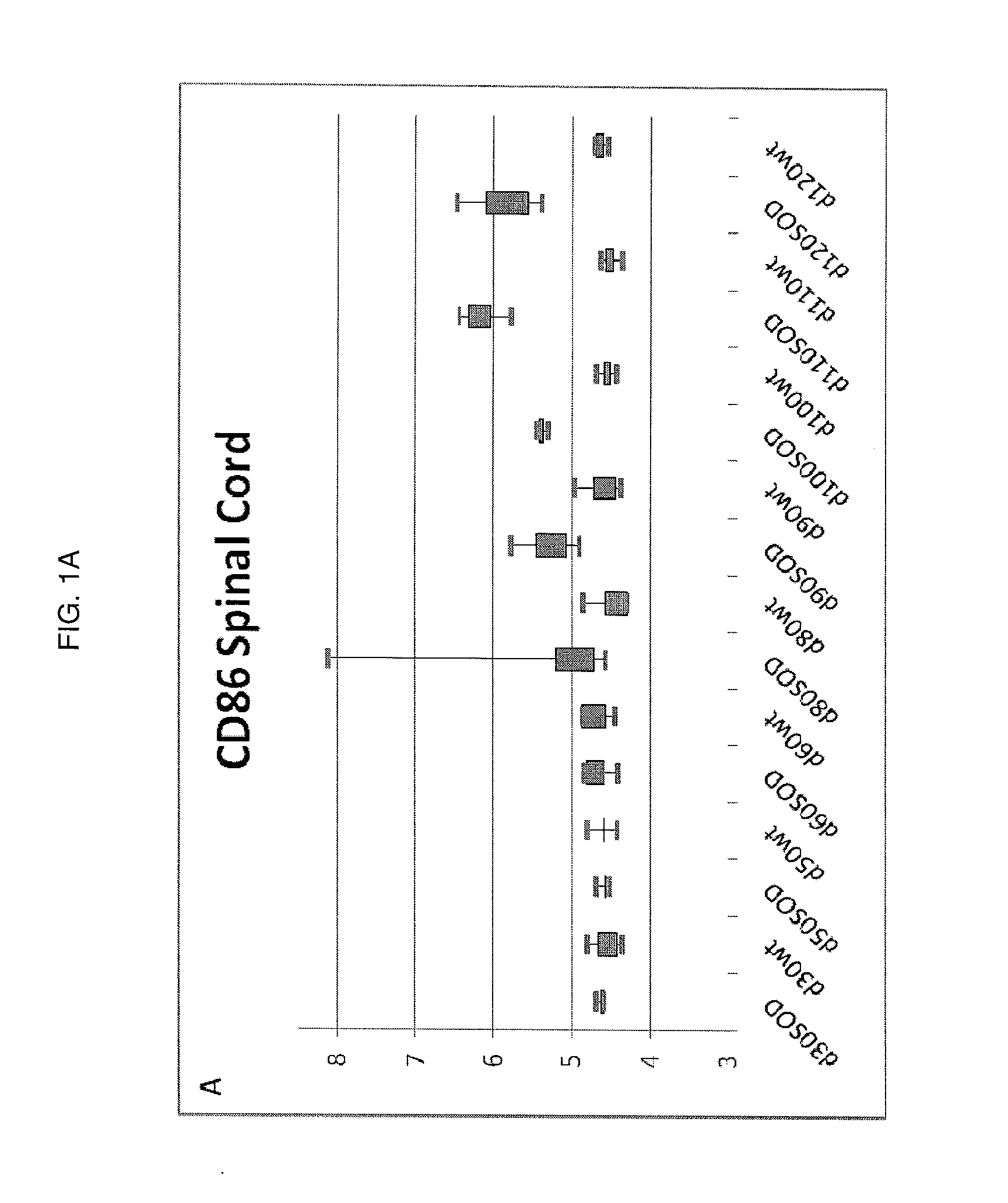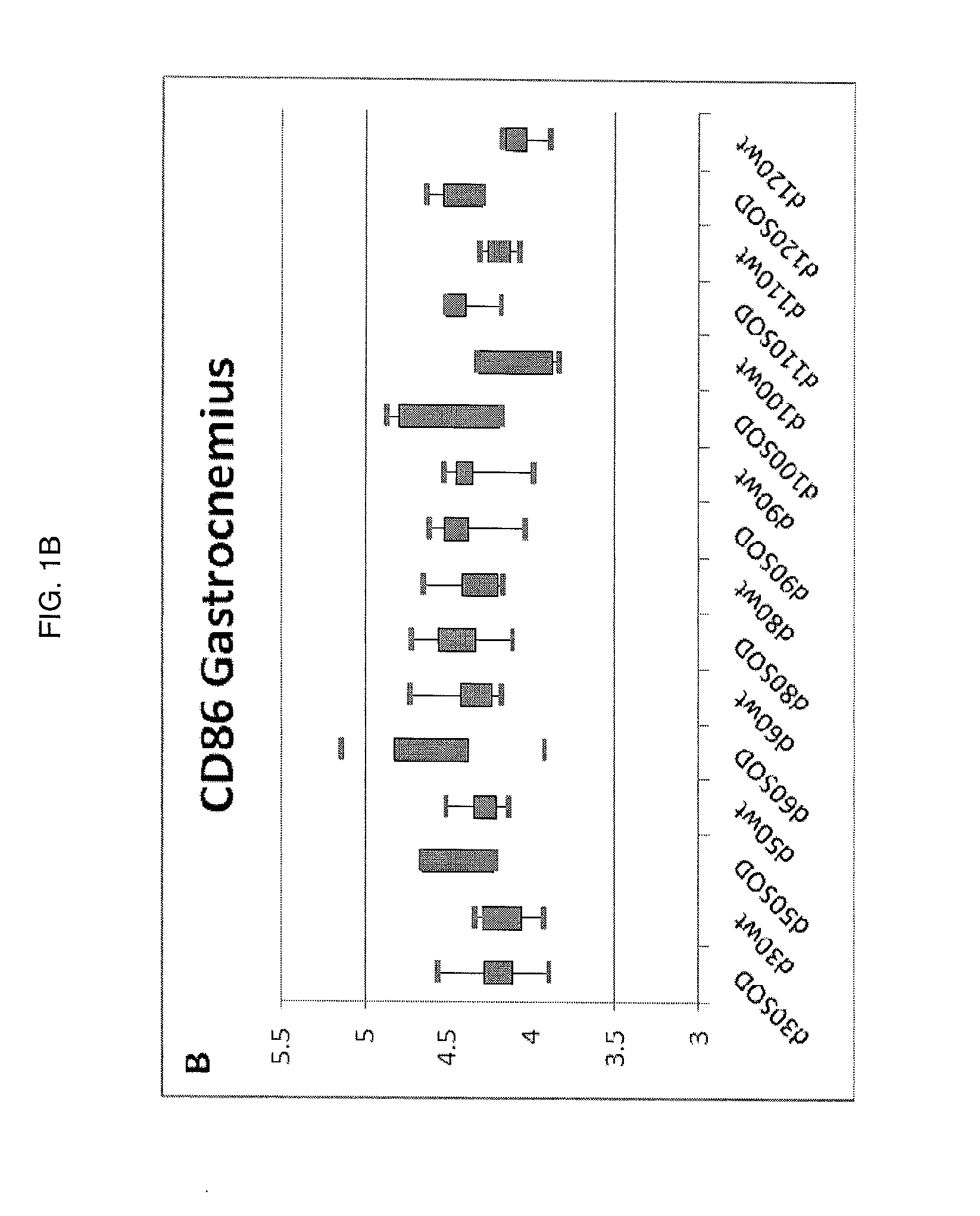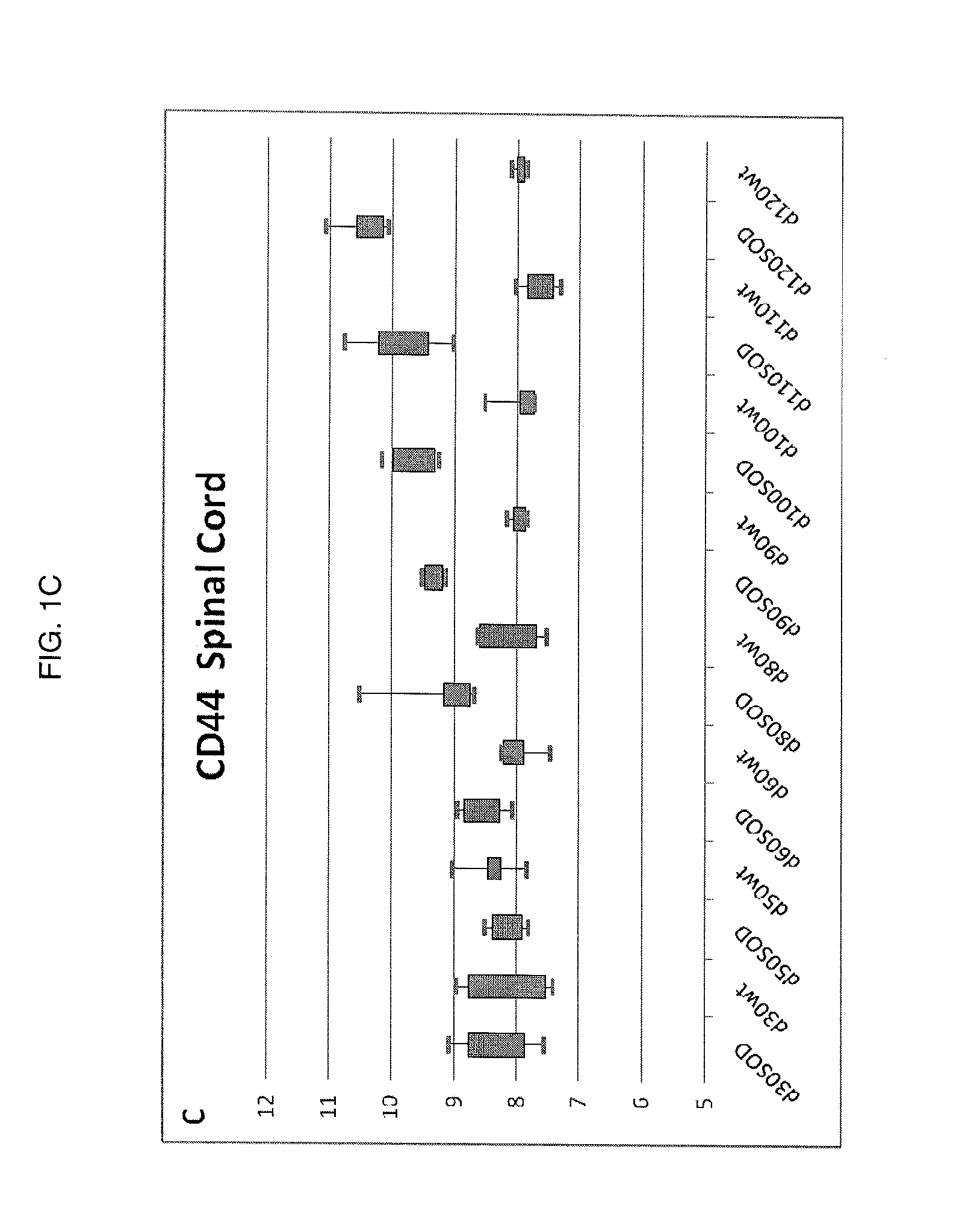Method for the treatment of neurodegenerative diseases
a neurodegenerative disease and treatment method technology, applied in the field of methods, can solve the problems that doctors have limited choices for treating als
- Summary
- Abstract
- Description
- Claims
- Application Information
AI Technical Summary
Benefits of technology
Problems solved by technology
Method used
Image
Examples
example 1
[0053]Characterization of the Molecular Mechanisms of Neurodegeneration in the G93A Mouse Model of ALS.
[0054]In order to identify molecular pathways amenable to therapeutic development, changes in gene expression patterns were characterized during disease progression in the G93A mouse model. Whole genome transcriptional profiling was studied using Affymetrix GeneChip® Mouse Expression set 430vII MOE430vII genechips. A longitudinal study design was employed comparing G93A skeletal muscle and spinal cord to non-transgenic littermates. In the G93A mouse model symptom onset is first seen as tail paralysis starting at approximately day 75 with progressive paralysis in the hindlimbs, then forelimbs, and finally diaphragm. The mean survival of the G93A animal colony is 134 days. The longitudinal study design collected calf muscle (gastrocnemius muscle) and spinal cord from G93A animals and wild type litter mates at days 30, 50, 60, 80, 90, 100, 110, and 120 (day 0 is date of birth). For ea...
example 2
[0059]Characterization of Antigen Presenting Cells in Skeletal Muscle and the Peripheral Nervous System.
[0060]In order to determine the presence and localization of potential antigen presenting cells in gastrocnemius muscle from G93A and wild type animals, immunohistochemistry was performed on gastrocnemius tissues that were harvested from G93A and wildtype mice, at day 110. Immediately after harvesting, the tissues were embedded in OCT. Frozen sections were H&E stained and hybridized with antibodies to myelin (anti-S100b antibody) or antibodies to hematopoietic cell lineages including T cells (anti-CD3 antibody), B cells (CD45R pan B cell antibody), and macrophages (anti-CD11b antibody). At day 110 there was infiltration of CD11b positive macrophages and the macrophages appear to be localized to the axons of nerves innervating the skeletal muscle. The localization of macrophages is not dispersed across the entire muscle suggesting that the inflammation is not due to muscle atrophy ...
example 3
[0065]Pharmacokinetic Analysis of MR1 in G93A Tissues
[0066]Tissue levels of MR1 directed against murine CD40L were determined using a matrix matched, non-competitive enzyme linked immunoabsorbent assay (ELISA) in the sandwich format. Seven point standard curves were included on each plate. Standards were prepared using purified MR1 spiked into PBS diluent solution. PBS diluent solution was matrix matched with the normal mouse tissue at the equivalent dilution of the unknown samples to correct for any non-specific effects resulting from tissue lysates.
[0067]84 plasma samples were taken for pharmacokinetic analysis over a period of two weeks after dosing (10 mg / kg, IP) in both female and male G93A mice.
[0068]The elimination half-life was similar in females (23 d) and males (22 d) and similar to the half-life for a typical mouse IgG2-based antibody in the mouse. No signs of anti-hamster antibody response were seen.
[0069]Females show a somewhat smaller volume of distribution for MR1 tha...
PUM
 Login to View More
Login to View More Abstract
Description
Claims
Application Information
 Login to View More
Login to View More - R&D
- Intellectual Property
- Life Sciences
- Materials
- Tech Scout
- Unparalleled Data Quality
- Higher Quality Content
- 60% Fewer Hallucinations
Browse by: Latest US Patents, China's latest patents, Technical Efficacy Thesaurus, Application Domain, Technology Topic, Popular Technical Reports.
© 2025 PatSnap. All rights reserved.Legal|Privacy policy|Modern Slavery Act Transparency Statement|Sitemap|About US| Contact US: help@patsnap.com



